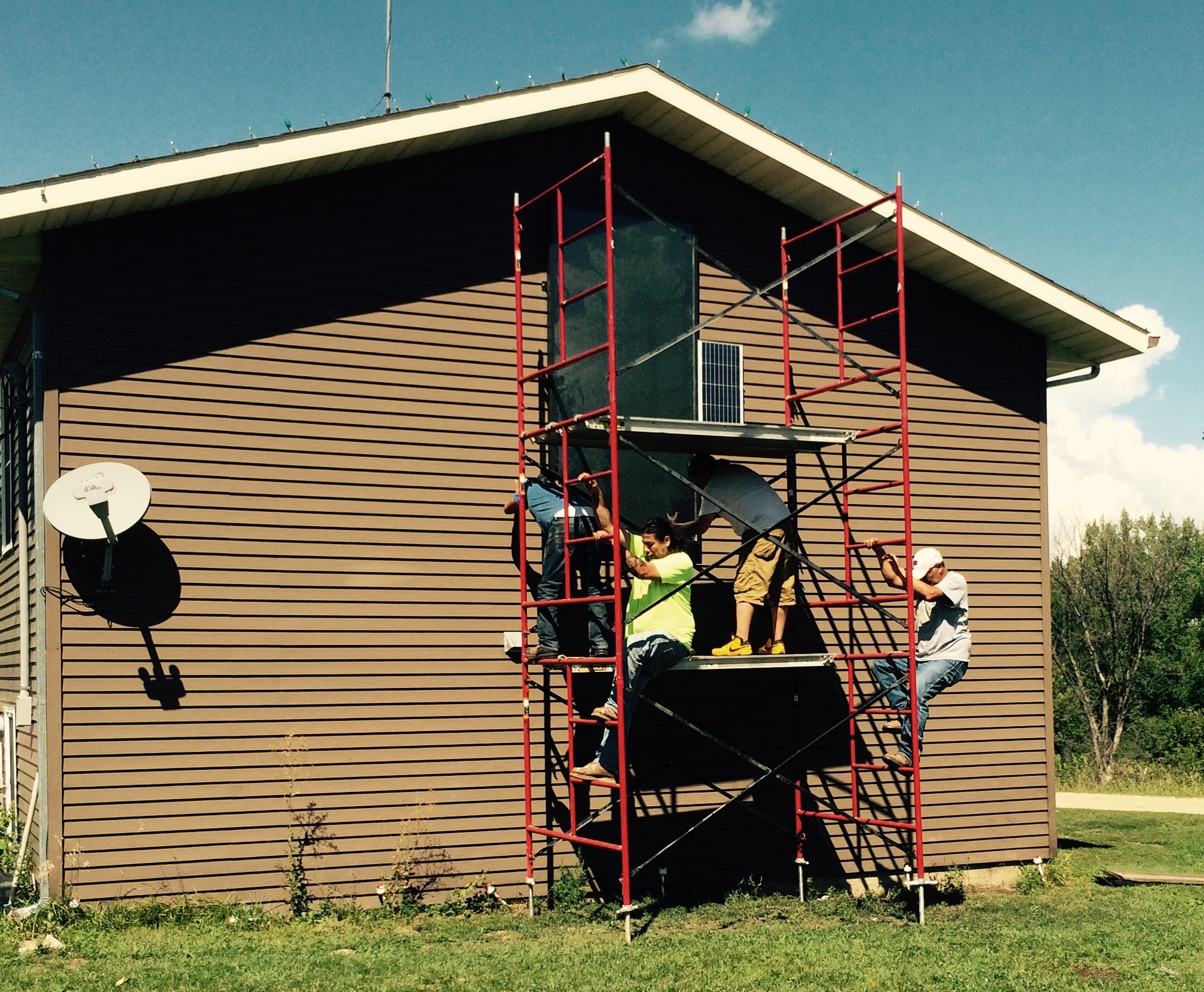Silas Red Cloud leads the crew by creating a line for tree planters to follow. Photo by Evan Barrientos
by José Chalit Hernandez, Marketing Manager
Planting trees is about more than just planting trees. We hear this frequently from our partners. On Lakota Tribal Lands, planting trees is done with great care, intention, and gratitude. When asked about what makes Pine Ridge a special place for him, Chief Henry Red Cloud told us it was the beautiful country, the rolling hills and the animals. “It’s all here,” he mentioned as he spoke on the importance of honoring trees as relatives.
After a year of managing the pandemic in their community, the Oglala Sioux Tribe was excited to join us and Red Cloud Renewable (RCR) last month by sending out a group of hard-working tree planters to join our spring planting. Thanks to all of the tree planters being vaccinated against Covid-19, TWP staff (who were also vaccinated) were able to join for the first time since 2019’s planting season to reconnect with old friends and meet new people. For five days, we planted trees alongside Lakota community members and visited former planting sites where we observed many healthy and robust ponderosa trees that were planted 5+ years ago.
Tink and her son Ladon help arrange a tray of tree seedlings in the green house at RCR. Photo by Evan Barrientos
For many in the tree planting crew, the spring planting season presented a valuable opportunity to earn income, feel empowered and reconnect with others in the community after a long year of uncertainty and scarcity. Each day started bright and early with freshly made coffee and a hearty breakfast. During meals and between activities, the hired cook that supported the project, Tink, shared stories with us and the other tree planters about her time at Standing Rock supporting the NODAPL camp. Her son Ladon would run around the Sacred Earth Lodge at RCR with a big grin and greet us all in the morning and be there in the afternoon after returning from tree planting. For the first time in a long time, we felt deeply connected to our partner community. We felt incredibly grateful to join forces with this group of generous, resilient, and hard-working people.
While in Pine Ridge, we also began filming the long-awaited short documentary about our reforestation efforts, thanks to another funding sponsor. As a supporter of our tribal reforestation programs, we want you to be among the first to gain exclusive access to this video content later this summer! See how below.
In New Mexico, our National Program staff are currently meeting with the Tri-Pueblo Coalition to finalize timelines and logistics for tree planting in the Jemez Mountains in the coming months. Tree planting in New Mexico will also be a unique opportunity as we enter our third year of partnership with Santo Domingo Pueblo and the second year with Cochiti and Jemez Pueblos. So many exciting things are on the horizon, and we can not wait to share more stories directly from our partners with you. Thank you for believing in and supporting Indigenous-led projects!






















